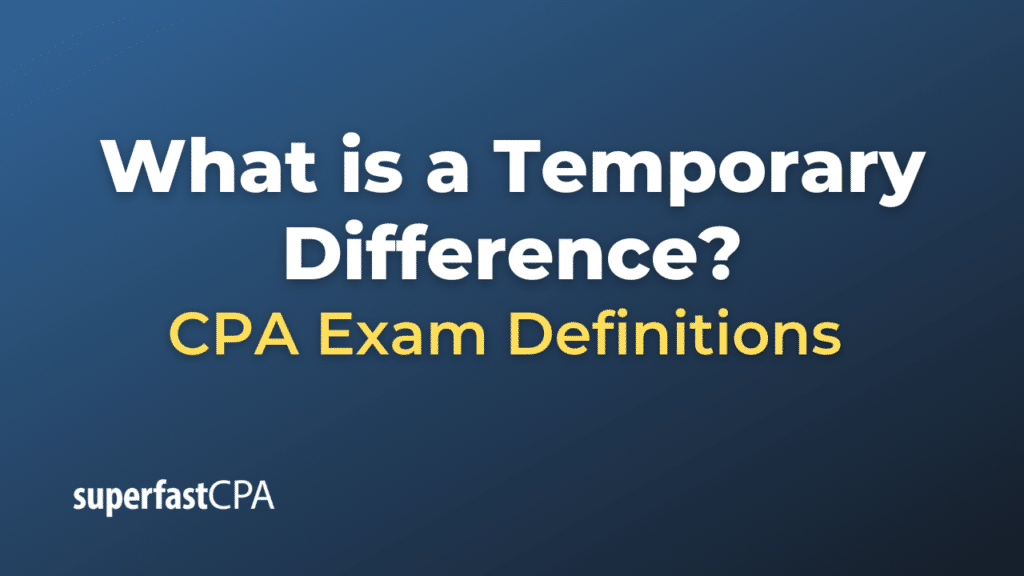Temporary Difference
A “temporary difference” arises in financial accounting and tax accounting when the timing of recognizing a particular income or expense in the financial statements differs from the timing of recognizing it in the tax return. This difference leads to a discrepancy between the carrying amount of an asset or liability in the balance sheet and its tax base, resulting in deferred tax assets or deferred tax liabilities.
In essence, temporary differences will reverse or even out over time, meaning the financial accounting and tax accounting treatments will eventually converge.
There are two main types of temporary differences:
- Taxable Temporary Differences: These lead to future taxable amounts. In other words, they will result in taxable amounts in future periods when the related asset’s carrying amount is recovered or the related liability is settled. This often results in the creation of a deferred tax liability.
- Deductible Temporary Differences: These lead to amounts that are deductible in the future. They will result in amounts that are deductible (reducing taxable income) in future periods when the carrying amount of the asset is recovered or the liability is settled. This often results in the creation of a deferred tax asset.
Example of a Temporary Difference
Let’s dive deeper into the example of XYZ Company and its equipment purchase, and examine how the temporary difference plays out over multiple years.
Scenario: XYZ Company purchases equipment for $100,000 with a 5-year useful life. For financial reporting, XYZ uses straight-line depreciation, while for tax purposes, it uses an accelerated depreciation method.
Depreciation Schedule:
| Year | Book Depreciation (Straight-Line) | Tax Depreciation (Accelerated) | Temporary Difference |
|---|---|---|---|
| 1 | $20,000 | $40,000 | $20,000 |
| 2 | $20,000 | $30,000 | $10,000 |
| 3 | $20,000 | $15,000 | -$5,000 |
| 4 | $20,000 | $10,000 | -$10,000 |
| 5 | $20,000 | $5,000 | -$15,000 |
(Note: These tax depreciation numbers are fictional and for illustrative purposes only.)
Observations:
- Year 1 and 2 : Tax depreciation is greater than book depreciation, leading to a taxable temporary difference. This means XYZ will owe more taxes in the future when it takes lower tax depreciation than book depreciation.
- Year 3 to 5: Book depreciation is greater than tax depreciation, leading to a deductible temporary difference. XYZ will get a tax benefit in these years since it will deduct more for book purposes than for tax purposes.
How does this translate into deferred taxes?
Assuming a tax rate of 25%:
| Year | Temporary Difference | Deferred Tax (at 25%) |
|---|---|---|
| 1 | $20,000 | $5,000 (Liability) |
| 2 | $10,000 | $2,500 (Liability) |
| 3 | -$5,000 | -$1,250 (Asset) |
| 4 | -$10,000 | -$2,500 (Asset) |
| 5 | -$15,000 | -$3,750 (Asset) |
In Years 1 and 2, XYZ recognizes a deferred tax liability because, in the future, it will owe more taxes due to the temporary difference. In Years 3 to 5, XYZ recognizes a deferred tax asset because it will benefit from the temporary difference in those years.
Over the entire 5-year period, the total temporary differences net out to zero, emphasizing the “temporary” nature of the difference. The deferred tax assets and liabilities also net out over the period, ensuring no long-term discrepancy between financial and tax reporting.













